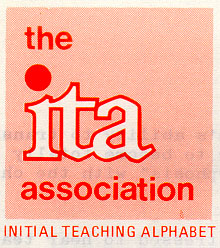



Provenance
1 - The i.t.a. Association
1 - The i.t.a. Association
|
Home Provenance Series List Gallery Index Search |
| Date Range | 1974 - , (As at February 2001, the Association has never formerly dissolved). |
| Details The initial teaching alphabet (i.t.a.) is an 'initial alphabet' for the teaching of reading to beginners. It consists of forty-four symbols which represent the 'forty sounds' of the English language according to Sir James Pitman. The i.t.a. alphabet is based on phonetic spelling of words - the theory being that children and beginners can become proficient readers much more quickly by using this medium which doesn't have the complexities and contradictions of the English "Traditional Orthography" (TO) alphabet. Once proficiency in reading skills is attained, i.t.a. allows the reader to transfer to the TO alphabet. As early as 1568, augmentation of the Roman alphabet was advocated to "adequately represent the sounds of English". Sir Isaac Pitman, inventor of the Pitman shorthand system, made a start at augmentation of the Roman alphabet in the 1830s, but it was his grandson Sir James Pitman who completed the task in 1960. Sir James Pitman's development of i.t.a. was not an attempt at spelling reform, but the creation of a medium for the initial learning of reading. Arlie B. Hargreaves was involved with the i.t.a. in Australia from the beginning, first as i.t.a. advisor for Pitman House Publishing Co., Carlton, which sponsored the introduction of i.t.a. into Australia from 1963-1973; then, with the help of Sir George Paton, Hargreaves formed the i.t.a. Association of which she served as Honorary Secretary/Treasurer. At the same time, Hargreaves used i.t.a. as a tutor in literacy at the CAE (Council of Adult Education), and also with AMES (Adult Migrant Education Services). Her home in Carlton served as the office and resource centre for the i.t.a. Association. Chronology 1995 Committee (in recess) Related Organisations | |
| References | See Project file; ITAA00191. |
| Series | 1 Films, Videos and Related Recordings c. 1960 - 1978 2 Audio Tapes 1975 - 1976 3 Sir James Pitman - Lecture Notes and Slides 1963? - 1965? 4 Class Aids 1961 - 1979 5 Teacher Training 1955 - 1985 6 Publications 1959 - 1987 7 Correspondence 1960 - 1981 8 Development of i.t.a. in Australia 1963 - 1984 9 Formation of The i.t.a. Association 1972 - 1986 10 Education in Aboriginal Communities, Teaching of the Bible, and Sudan Interior Mission (SIMLIT) 1966 - 1992? |
|
Published by the Australian Science and Technology Heritage Centre on AustehcWeb, November 2001
Listed by Helen Barber, Lisa Cianci, Gavan McCarthy, Lisa O'Sullivan and Rachel Tropea HTML edition Updated 2 September 2008 http://www.austehc.unimelb.edu.au/guides/itaa/ITP0001.htm The template for this finding aid is part of the Heritage Documentation Management System |
[ Top of Page | Home | Series | Provenance | Search | Index ] |